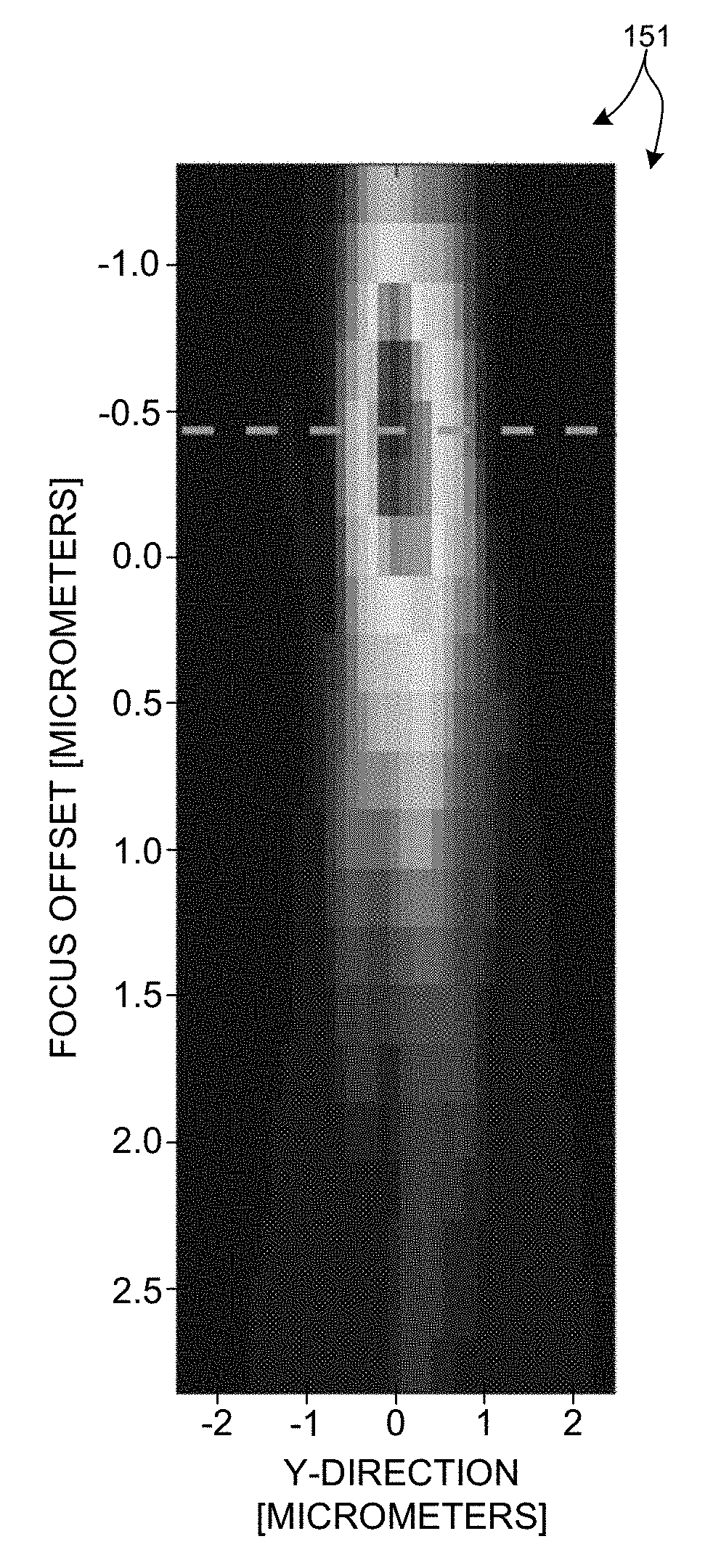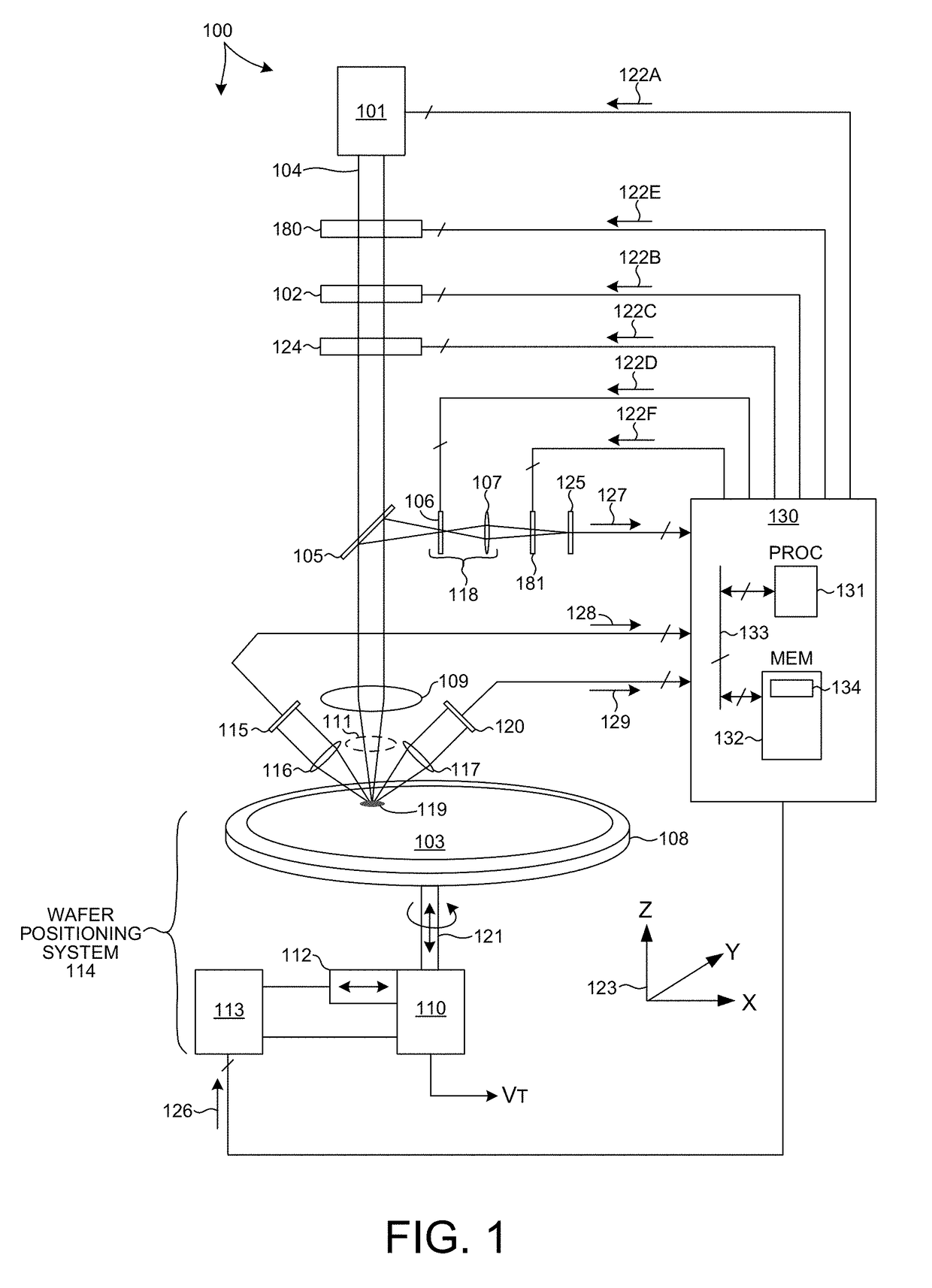Three-Dimensional Imaging For Semiconductor Wafer Inspection
a three-dimensional imaging and semiconductor technology, applied in the direction of image enhancement, semiconductor/solid-state device testing/measurement, instruments, etc., can solve the problems of difficult detection of defects buried in relatively thick layers, difficult to detect defects in the presence of buried defects, and difficult to achieve sem review. often unfavorable, improve the detection and classification of defects, and improve the effect of detection and classification
- Summary
- Abstract
- Description
- Claims
- Application Information
AI Technical Summary
Benefits of technology
Problems solved by technology
Method used
Image
Examples
Embodiment Construction
[0042]Reference will now be made in detail to background examples and some embodiments of the invention, examples of which are illustrated in the accompanying drawings.
[0043]Methods and systems for improved detection and classification of defects of interest (DOI) on semiconductor wafers based on three-dimensional images are described herein. Three dimensional imaging of volumes of thick, layered structures enables accurate defect detection and estimation of defect location in three dimensions at high throughput. Traditionally, signals arising from acceptable wafer variation (e.g., nuisance and noise) often limit detection of DOIs. However, three-dimensional imaging captures signal propagation within the wafer, and thus is able to differentiate DOIs from nuisance and noise, even for relatively thick samples (e.g., 3D NAND wafers with a layered structure thicker than three micrometers). In some examples, optical inspection of thick samples based on three dimensional imaging different...
PUM
| Property | Measurement | Unit |
|---|---|---|
| wavelengths | aaaaa | aaaaa |
| wavelengths | aaaaa | aaaaa |
| depth | aaaaa | aaaaa |
Abstract
Description
Claims
Application Information
 Login to View More
Login to View More - R&D
- Intellectual Property
- Life Sciences
- Materials
- Tech Scout
- Unparalleled Data Quality
- Higher Quality Content
- 60% Fewer Hallucinations
Browse by: Latest US Patents, China's latest patents, Technical Efficacy Thesaurus, Application Domain, Technology Topic, Popular Technical Reports.
© 2025 PatSnap. All rights reserved.Legal|Privacy policy|Modern Slavery Act Transparency Statement|Sitemap|About US| Contact US: help@patsnap.com



